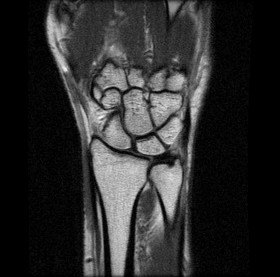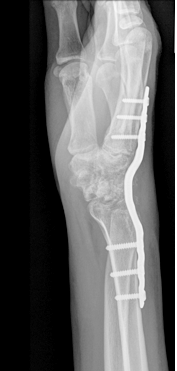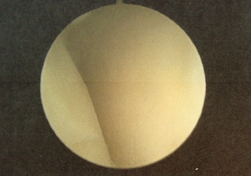Wrist Pain
Wrist pain has many possible causes. The wrist joint is an intricate assembly of 10 bones with associated joints and ligaments. In addition there are at least 20 tendons and several large and small nerves immediately adjacent.
Aches and pains which result from impacts or repetitive or strenuous activities may indicate significant injury or degradation of the wrist joint. There may be no abnormality in the wrist joint itself but adjacent tendons and nerves are the cause of symptoms. There are also a number of conditions which can arise spontaneously.
Wrist pain is assessed with a thorough discussion of symptoms, systematic examination and, usually plain x-rays. It is often necessary to have an MRI scan. Less often, nerve conduction tests, ultrasound or CT scans are required. Keyhole surgery (wrist arthroscopy) is also helpful in some circumstances and this can be both exploratory and allow some types of treatment.
Not infrequently, there may be no discoverable cause.
Some of the more usual causes are listed:
- Arthritis - spontaneous onset 'osteoarthritis'
- Arthritis - secondary to injury of scaphoid bone or radius bone
- Arthritis - due to rheumatoid disease
- Ganglions
- Tendonitis - 'de Quervain's', FCR
- Ligament damage - scapholunate ligament, TFCC ligament
- Nerve entrapment - radial nerve, median nerve - carpal tunnel



